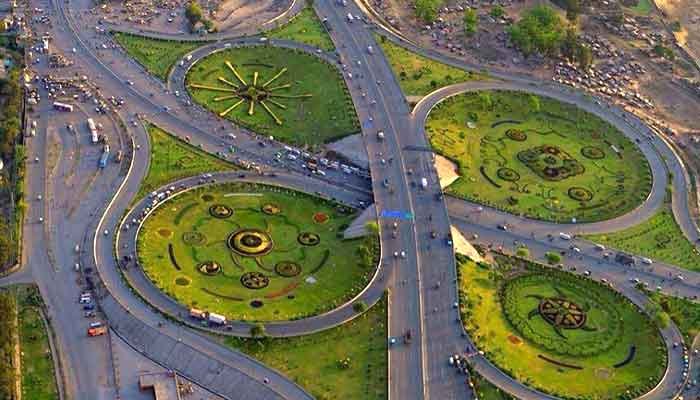A Glimpse into the Future.
Introduction.
Lahore Smart City, one of Pakistan’s most ambitious and advanced urban development projects, stands at the forefront of modern urban planning. Its unique approach combines innovative technology, sustainable practices, and integrated transportation systems to create a city that meets the demands of the future. This article explores the transportation and mobility aspects of Lahore Smart City, highlighting how it aims to transform the way people move within this new urban landscape.
Overview of Lahore Smart City.
Lahore Smart City is envisioned as a high-tech urban development project focused on sustainability, technology integration, and efficient resource management. Located near the Lahore Bypass and easily accessible from the Grand Trunk Road, it is designed to be a city within a city, with all the amenities and conveniences of a modern urban center. The project’s design considers environmental sustainability, smart infrastructure, and a comprehensive transportation network.

The Vision for Transportation and Mobility.
At the heart of Lahore Smart City’s vision is the concept of seamless mobility. The city planners recognize that transportation is a critical element in building a smart city. To this end, they aim to create an efficient, integrated, and sustainable transportation network that accommodates various modes of transport, reduces traffic congestion, and promotes eco-friendly practices.
Integrated Transportation Network.
Lahore Smart City aims to establish an integrated transportation network that connects different parts of the city seamlessly. This network includes roads, public transportation, pedestrian pathways, and cycling routes. The city’s design emphasizes connectivity, allowing residents to travel from one point to another with minimal disruption.
Road Infrastructure.
The road infrastructure in Lahore Smart City is designed to facilitate smooth traffic flow. Wide roads, multiple lanes, and well-planned intersections contribute to reduced congestion. Additionally, the use of smart traffic management systems helps optimize traffic signals and manage traffic during peak hours.
Public Transportation.
Likewise, public transportation is a key component of the mobility plan in Lahore Smart City. The city aims to provide a variety of public transportation options, including buses, shuttles, and possibly light rail systems. These public transport options are designed to be efficient, affordable, and accessible to all residents, reducing the dependency on private vehicles.
Pedestrian and Cycling Pathways.
Similarly, Lahore Smart City is designed with pedestrians and cyclists in mind. The city features dedicated pedestrian pathways and cycling routes that encourage residents to use eco-friendly modes of transportation. This approach not only reduces traffic congestion but also promotes a healthier lifestyle.
Smart Mobility Solutions.
The use of technology plays a crucial role in Lahore Smart City’s transportation and mobility strategy. The city aims to implement smart mobility solutions that enhance efficiency, safety, and sustainability.
Smart Traffic Management.
Lahore Smart City employs smart traffic management systems to optimize traffic flow. These systems use sensors and data analytics to monitor traffic patterns and adjust traffic signals accordingly. This helps reduce congestion and improve travel times.
Intelligent Transportation Systems (ITS).
Intelligent Transportation Systems (ITS) are integrated into the city’s transportation network. ITS uses technology to provide real-time information on traffic conditions, public transportation schedules, and parking availability. This information is accessible to residents through mobile apps and digital displays throughout the city, allowing them to plan their journeys more effectively.
Electric Vehicles and Charging Infrastructure.
Lahore Smart City promotes the use of electric vehicles (EVs) as part of its sustainable transportation strategy. The city plans to establish a network of EV charging stations, encouraging residents to switch to electric vehicles. This reduces the carbon footprint and aligns with the city’s commitment to environmental sustainability.
Sustainable Mobility Practices.
Indeed, sustainability is a core principle in Lahore Smart City’s transportation and mobility plan. The city aims to reduce its carbon footprint and promote eco-friendly practices in all aspects of transportation.
Green Spaces and Parks.
Additionally, Lahore Smart City incorporates green spaces and parks into its design, encouraging residents to walk, cycle, and use public transportation. These green spaces provide recreational opportunities and help improve air quality by reducing vehicle emissions.
Carpooling and Ride-Sharing.
To further reduce traffic congestion and carbon emissions, Lahore Smart City encourages carpooling and ride-sharing. The city plans to establish dedicated carpool lanes and promote ride-sharing services, making it easier for residents to share rides and reduce the number of vehicles on the road.
Environmental Impact Reduction.
Furthermore, the transportation and mobility plan for Lahore Smart City minimizes the environmental impact of transportation. It achieves this by using renewable energy sources for public transportation, reducing vehicle emissions, and promoting green transportation options like cycling and walking.
Conclusion.
Similarly, Transportation And Mobility Of Lahore Smart City with Lahore Smart City, where transportation and mobility play a central role in its vision. By embracing smart technology, sustainable practices, and integrated transportation networks, the city seeks to create a more efficient and environmentally friendly urban environment. As Lahore Smart City develops, its innovative approach to transportation and mobility inspires other cities striving for a smarter, greener future.
